FUN FOOD
PATATAS BRAVAS
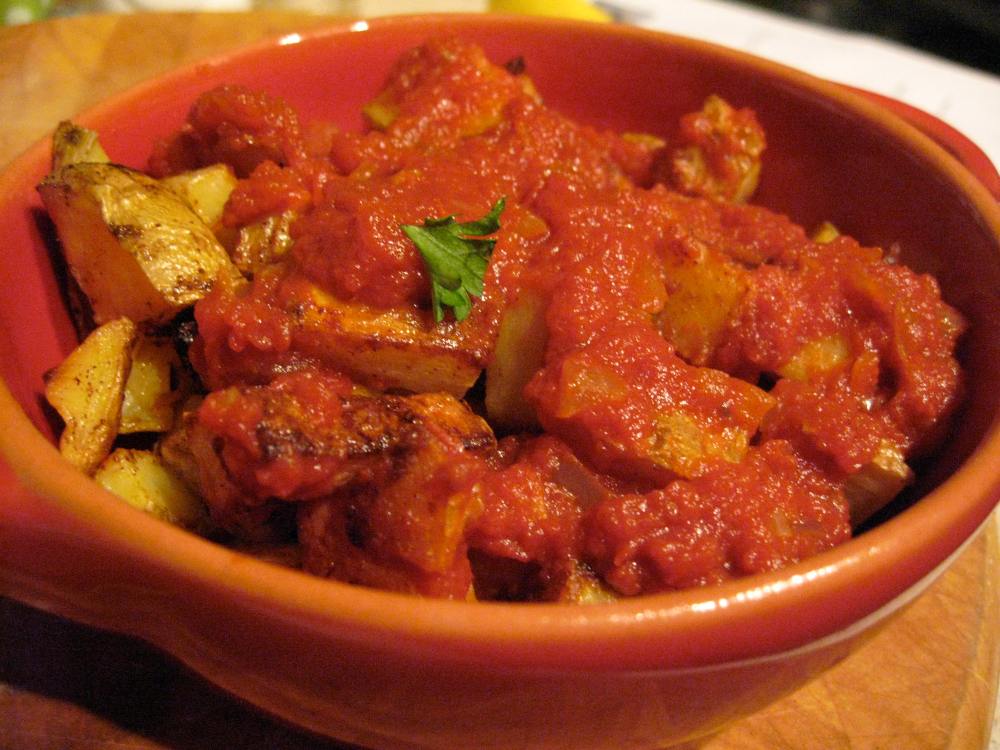
This is my patatas bravas designed especially for the photo. They did not look this appetising in the Tupperware at the food fair!
This is a Spanish dish that can be found all over Spain. It was mentioned in one of our lectures. When my family and I travelled around Spain in the middle of last year we found these on every menu in every region (we thought we were top shit for knowing the proper pronunciation not registering the grimace each wait staff would try to suppress when we ordered it). The sauce is usually more orange in colour and smooth, however, due to my limited utensils in my share house it looks more red and lumpy (still good though!)
Making the dish was fun. Very simple but also many elements that required no over seasoning and the sauce required at least 24 hours of sitting after cooking. The potatoes were the hardest part just to get them perfectly crispy. Ideally you would be served the dish straight from the oven but given that the meal needed to travel to its food fair location they were a touch soggier and cooler than they should have be.
I personally enjoy the spice of the sauce so I added a little extra chilli. They were all eaten at the food fair and people seemed to enjoy them (despite the sogginess).
The dish has personal significance because before each meal our family sit down for ‘laughs’ which is essentially some antipasto we enjoy whilst helping out with cooking dinner. After traveling to Spain we started enjoying some Patatas Bravas before our meals and it has come to represent my families eating habits. I can not hear the dish without thinking of my mum and dad and brothers in the kitchen.
INGREDIENTS:
Olive oil, Garlic, Onion, Tomato Chopped and Pureed, Paprika, Chilli, Sugar, Potato, Parsley
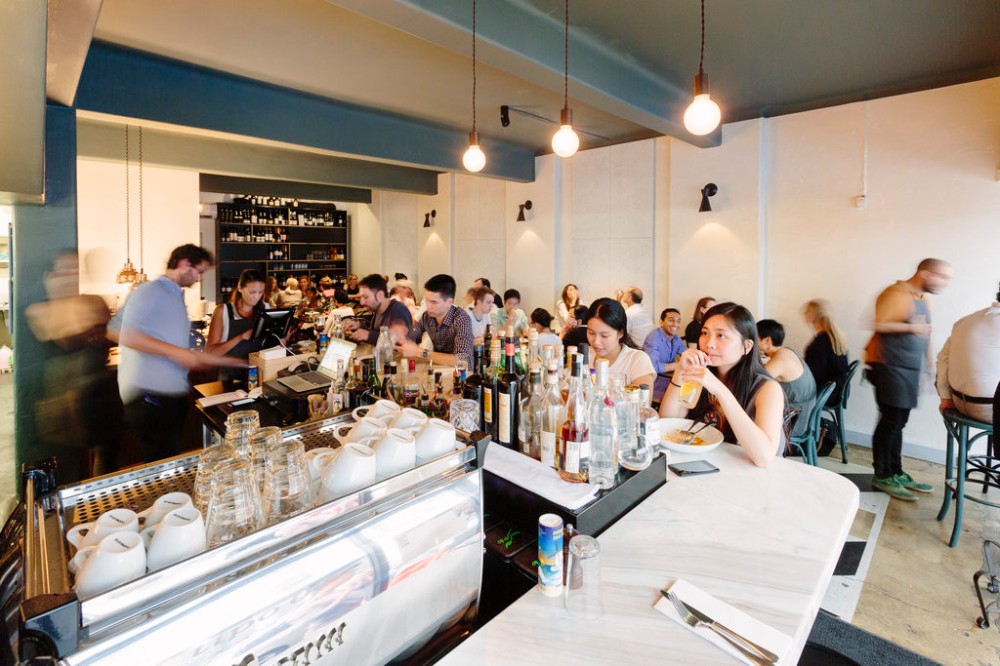
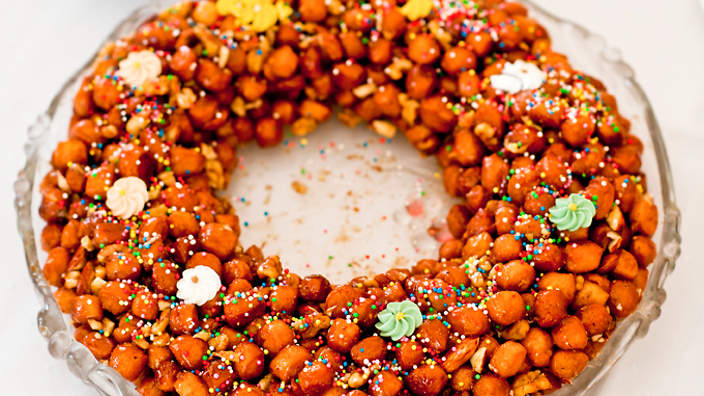
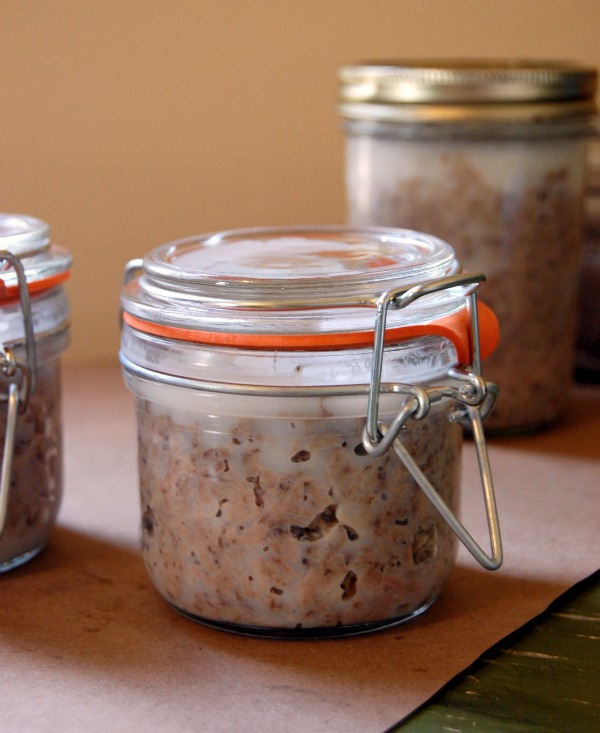
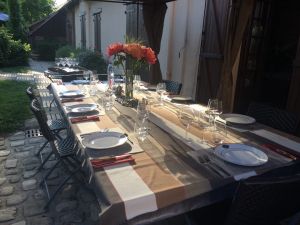 The family that owned the B&B invited us to diner at their table (pictured) and cooked us a traditional French meal (there are no pictures of the meal itself because I felt rude taking pictures whilst dining). The start of this epicurean journey was marked by the popping of Champagne and the dipping of bread into homemade Rillettes de Porc. For me the journey could have ended then and there, the rustic texture had my knees shaking and the depth of flavour quickly saw me take a second dip.
The family that owned the B&B invited us to diner at their table (pictured) and cooked us a traditional French meal (there are no pictures of the meal itself because I felt rude taking pictures whilst dining). The start of this epicurean journey was marked by the popping of Champagne and the dipping of bread into homemade Rillettes de Porc. For me the journey could have ended then and there, the rustic texture had my knees shaking and the depth of flavour quickly saw me take a second dip.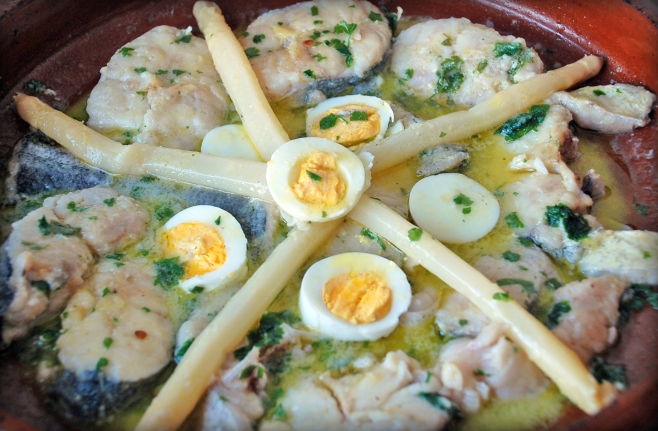
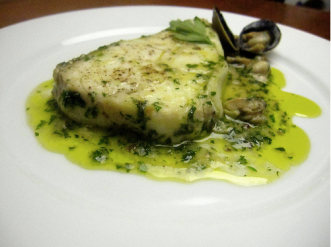 The simplicity of the dish is what makes it so wonderfully Basque but it is also what causes it to be difficult to place as distinctly Spanish. The presentation in terracotta makes the distinction easier but in countries like France and
The simplicity of the dish is what makes it so wonderfully Basque but it is also what causes it to be difficult to place as distinctly Spanish. The presentation in terracotta makes the distinction easier but in countries like France and